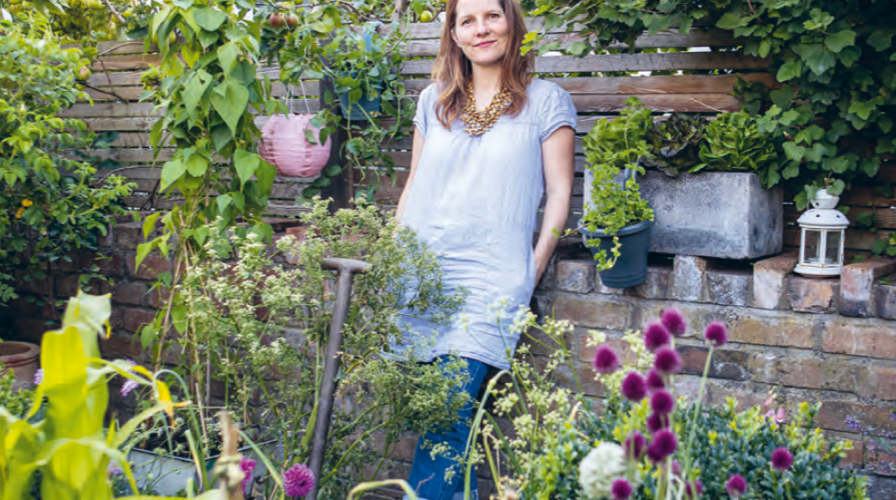A Guest Post by Cinead McTernan, author of City Veg
In his book An Ear To The Ground: Understanding Your Garden, Ken Thompson, author and botanist, makes the case for growing blackcurrants in preference to blueberries, largely because they’re much higher in antioxidants and easier to grow (blackcurrants don’t require acidic ericaceous soil). The book is an inspirational read because Ken is able to convey complex scientific information simply, allowing you to connect with your own patch and, perhaps more importantly, understand what is going on in it. Whether you agree with him on the blackcurrants or not (it’s literally a matter of taste), he raises an excellent point about carefully considering which type of crop to grow if space is an issue (not to mention, budget, time and experience). Taking a pragmatic approach about what you’re going to try will make a huge difference to your experience and results. Sure, blueberries are delicious, and it’s not a huge undertaking to buy a bag of ericaceous compost to fill a container, but if it’s a question of growing a blueberry or blackcurrant, it’s worth weighing up whether one might have the edge for various reasons.
Don’t get me wrong, I’m not suggesting that every crop requires a careful evaluation of its pros and cons (though that’s not a terrible idea if you have a small garden) – at some point every growing season, I’ll find myself staring at my online shopping basket, which has been impulsively filled with varieties that hadn’t even made it onto the ‘maybe’ wish list. This is all part of the fun of growing your own, but it can be equally satisfying to show a bit of restraint and stick to the varieties that ticks all your boxes.
Once you’ve drawn up a wish list of crops – mine usually comes in at around 65 varieties before I have to ruthlessly cull it – you can start to whittle out the ones that won’t do well in your particular location (too sunny, or too shady, etc.).
Then think about its growing habitat – if you only have room to fill one border with crops, you’ll have to prioritise from the types that won’t appreciate being grown in containers (summer fruiting raspberries, for example), or vice versa if you don’t have veg beds, you’ll have to choose the crops that like their leg room to be snug.
Disease resistance is another consideration, and a good idea for new growers, because the more success you have with the whole process – from sowing or growing to harvesting – the more you’ll want to continue and the more experience you can gain. And besides, even the most experienced gardeners would prefer not to have to battle with pests and diseases if they can help it – though perhaps if it came with the promise of flavour, they’d be prepared to wage a green-fingered war.
And, finally – although perhaps most importantly – consider the crop itself. There’s nothing like reading the descriptions in the catalogues, and I often find that my wish list grows again at this point, as I can’t resist a tomato with a sweet, honey flavour or a nutty-tasting winter squash.
Of course, Rocket Gardens brilliantly come to the rescue with their collections – the Container Garden Veg Patch is a great starting point, or the Mini Year Round Veg Patch should keep you on the straight and narrow. However, if you’d like to pick-and-mix, here are five fab suggestions that suit tight spots, and will produce a decent harvest:
Lettuce – any variety
Tomatoes – Tiny Tim
Cucumber – Any
Peas – Any
Lemon Verbena

